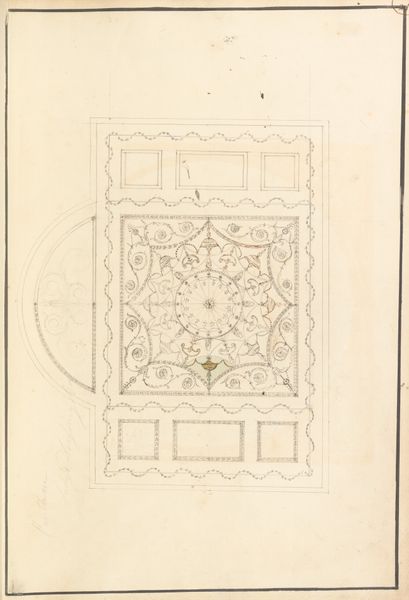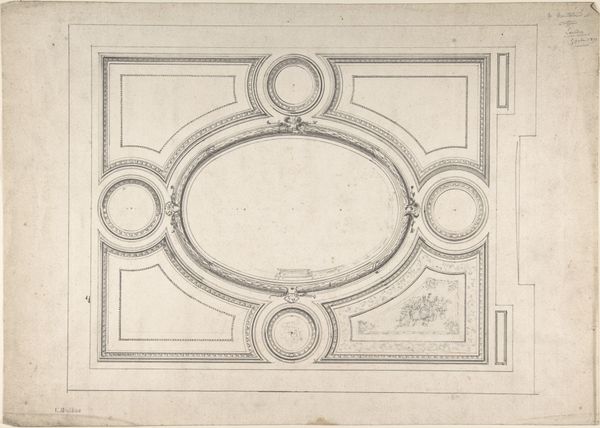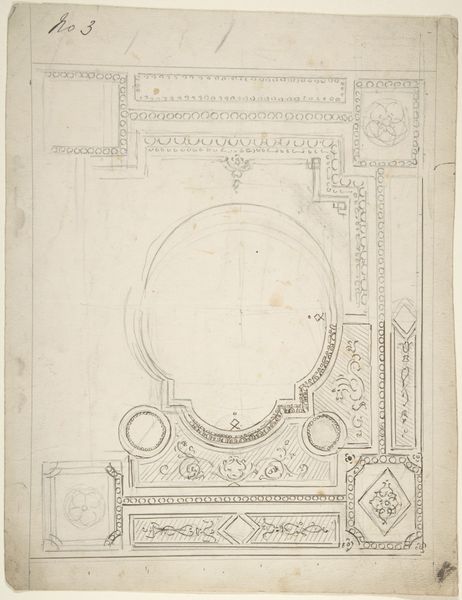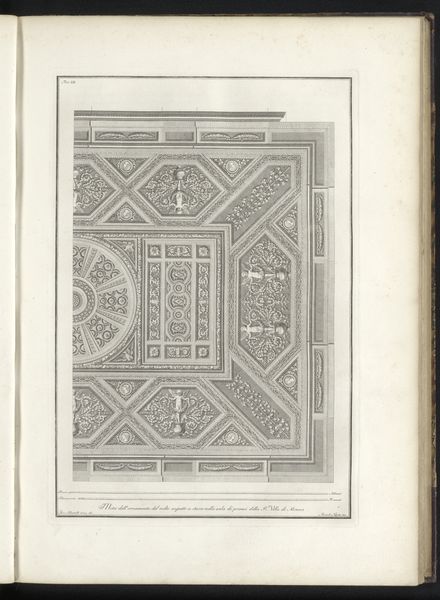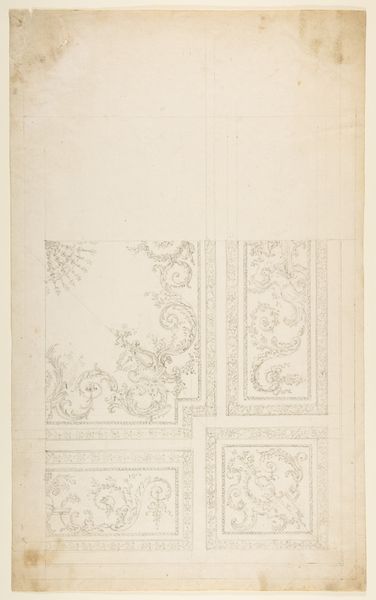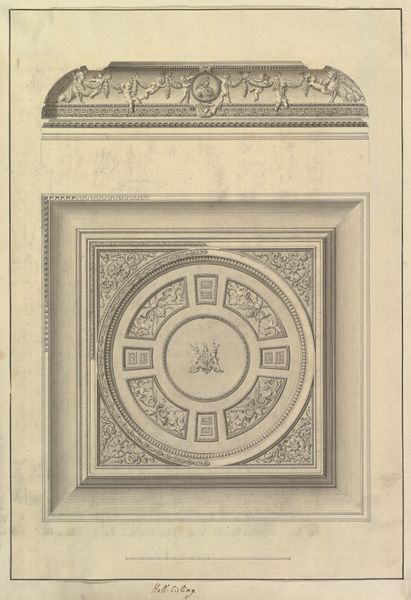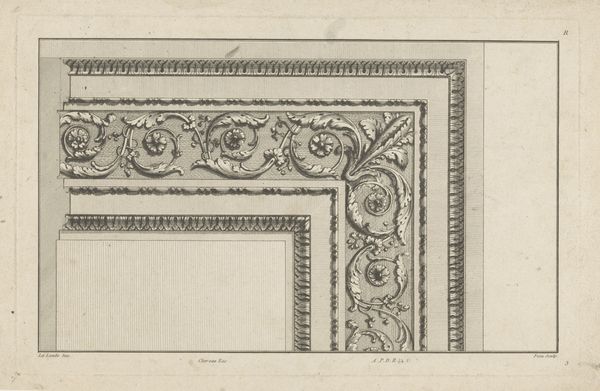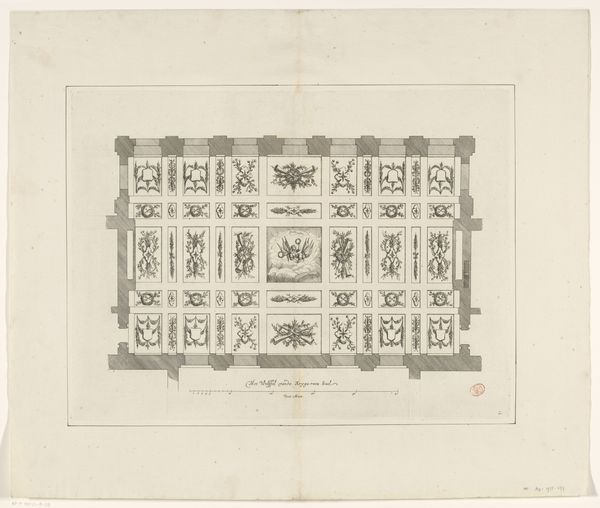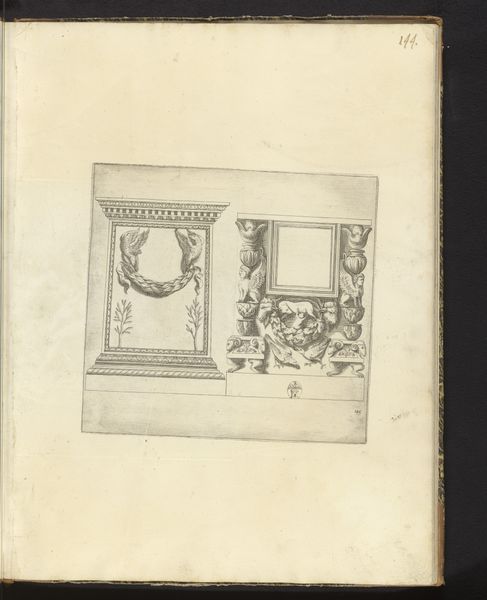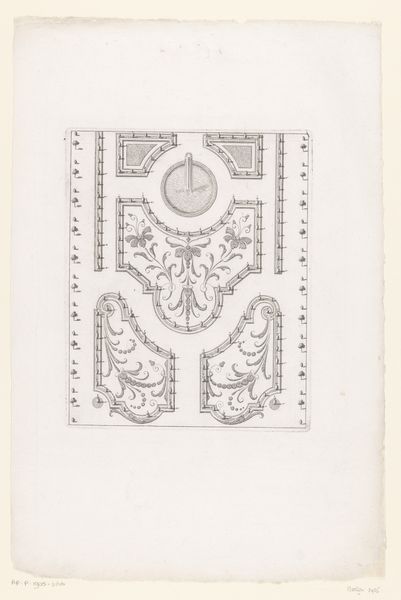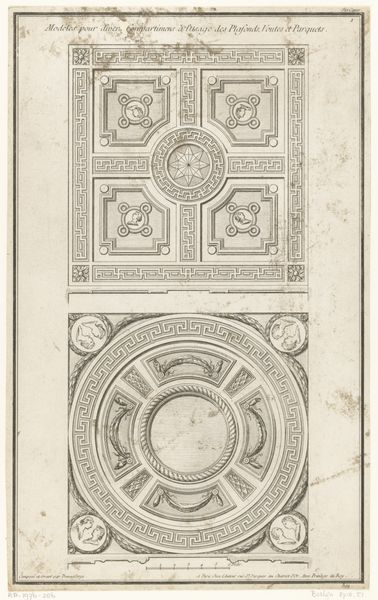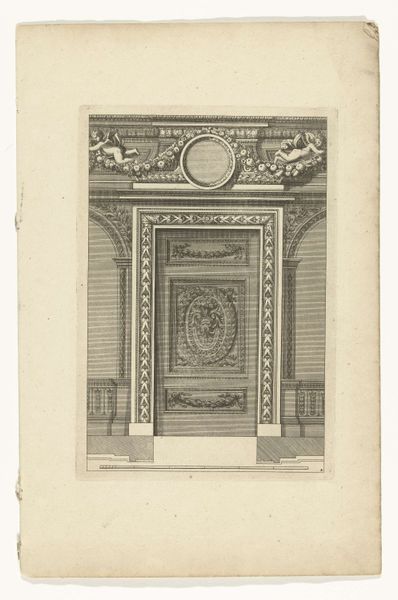
drawing, print, etching, engraving, architecture
#
drawing
#
baroque
# print
#
etching
#
geometric
#
line
#
academic-art
#
engraving
#
architecture
Dimensions: sheet: 12 7/8 x 9 13/16 in. (32.7 x 25 cm)
Copyright: Public Domain
Curator: Here we have an architectural drawing, an etching with engraving of "Ceiling to the Gallery, Houghton Hall, Norfolk" created around 1735 by Isaac Ware. Editor: It's surprisingly calming for a ceiling design. All those repeated geometric shapes—rectangles and semi-circles—give it a hypnotic, almost meditative feel. You could get lost staring at that all day. Curator: Well, these types of Baroque ceilings were meant to impress! Think about the patrons. Houghton Hall was built for Great Britain's first Prime Minister, Robert Walpole. Ware's design exemplifies the kind of architectural ambition associated with figures of power. Editor: True, there’s a subtle grandeur—but the monochrome really tones it down. Can you imagine seeing it from below? It’s hard to imagine it imposing any sense of authority. More like a fancy jigsaw puzzle. What does a ceiling “mean” in that context? Curator: In the 18th century, ceilings weren’t just decoration; they reinforced the homeowner's status and taste. Houghton Hall's interiors were open to elite guests. The ceiling was another symbol of wealth, education, and refined taste. Academic art always fulfills those functions of taste and wealth, right? Editor: Makes me think of wallpaper these days, just a repeating pattern! The delicate linework reminds me more of technical drafts than Baroque flourish. Curator: Ware published "The Plans, Elevations and Sections; Chimney Pieces and Ceilings of Houghton in Norfolk" in 1760. Publications such as these were intended to share knowledge and propagate classicized taste, thereby allowing elites to mimic style of properties like Houghton Hall in their homes. Editor: Funny that this display of power got flattened into a practical instruction manual, or shared commodity through its drawings. What do you know, power is, literally, an illusion. Curator: A telling point! To me, this piece offers insight into the self-conscious construction of power of the British elite during that time period. Editor: While I see this drawing as a gentle, repetitive study that has, well, put me in a state of relaxation and introspection. A good way to begin and end our chat!
Comments
No comments
Be the first to comment and join the conversation on the ultimate creative platform.

